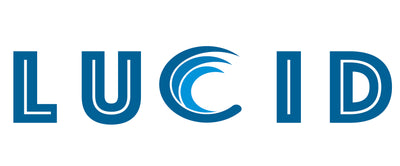
If you're new to stand up paddle boarding, you might hear certain terminology that aren't quite clear to you.
Paddle boarding has its own lingo, just like every other sport, and it might be a little confusing to people who don't paddle.
In order to help you better understand paddle boarding, below is a collection of frequent terminology and their definitions. The following time you watch a SUP video, read a blog, or participate in a conversion, you won't struggle to understand what is being said.
Definitions of Stand Up Paddle Board Terms
A
Adjustable Paddle
With this paddle, you may change the shaft's height to accommodate your height or the paddling environment.
All-around SUP
a stand up paddle board with a reasonable width and length that is versatile. It works for the majority of paddle boarding activities.
B
Is a carrying case for the paddle board and protects the board while transporting and makes the board easier to carry
Bungee Storage
a storage compartment constructed from an elastic cable fastened to the paddle board's D-rings. Typically, the front or back.
Buoyancy
The ability of your SUP board to float. The more weight the paddle board can support without sinking, the higher the floatibility.
C
Catch Phase
There are four stages to a paddle stroke. The paddle blade first touches the water during the catch phase.
Center Fin
a sizable fin located near the tail of a paddle board. The purpose of the central fin is to aid in tracking.
Chop
Chop Rugged water that is typically caused by wind.
Cross-coastal winds
These are breezes that move parallel to the shore, from right to left or from left to right.
Cruising
On calm water, this is relaxed paddle boarding.
D
Deck
your complete stand-up paddle board's top section.
Deck Pad
a sizable foam pad that is comfortable and covers the surface. You are given a cushioned base to stand on. Additionally, it provides more traction to prevent slipping on the wet board.
Dimensions
the paddle board's dimensions, or its length, width, and thickness.
Displacement Hull
This vessel has a V-shaped hull with a pointed nose that is built for maximum speed and minimal resistance. (For a definition of hull, see below.)
Drag
a factor slowing down your paddle board. Something like your leash hanging in the water may be to blame for this.
D-Ring
Stainless steel attachment points on paddle boards for attaching accessories such as a kayak seat.
Dropstitch
an inflatable stand-up paddle board construction design. The top and bottom pieces of fabric are connected by countless tiny threads.
Dry Bag
Paddlers store clothing and other valuables in watertight bags to prevent them from getting wet.
Downwinding
Paddling downwind entails going against the wind.
Dual Chamber Pump
An air chamber manual pump that makes it simpler to fill up your inflatable paddle board.
E
Eddy
A minor whirlpool is produced by water flowing against the main current.
EVA Foam
The deck cushions of paddle boards are made of the supple foam known as EVA.
F
Fiberglass
Hard boards and paddles are made of reinforced plastic made of glass fiber and resin.
Fin
SUPs have fins just like fish do. The fin on a paddle board is placed near the tail at the bottom to aid in performance.
Fin Box
the opening beneath the board into which the fin fits.
Fixed Paddle
This paddle has a shaft that is fixed in height; you cannot change it.
Flat Water
Water that is calm or moving slowly.
Flutter
the paddle's swaying motion while submerged in water during a stroke.
G
Glide
The motion and movement of the
paddle board's motion on the water.
H
Handle
Your paddle board should have a permanent handle to make carrying it easier. Paddles might have a single handle in the middle or three handles: one each at the center, nose, and tail.
Hull
This is the stand-up paddle board's bottom.
I
Inflatable SUP
In contrast to a typical paddle board, an inflatable one is inflated for usage and deflated for storage and transportation.
L
Leash
a piece of equipment for safety that keeps you bound to your paddle board. Your calf or ankle can accommodate your SUP leash.
This is a unique and the first transparent paddle board. Allowing riders to see any and everything underneath them with clarity
M
Mount
a place where extras like an action camera, a holder for a fishing rod, and a cup holder can be attached.
N
Nose
The paddle board's front portion can be either rounded or pointed.
O
Offshore Winds
These winds are coming from the land and are heading toward the water.
Onshore Winds
These are winds that originate from the water and blow in a shoreward direction.
P
Paddle Board
the paddle's wide, flat end that is submerged in the water.
Paddle Movement
using your SUP paddle to get around. Once the blade is in the water, the motion is repeated by pulling back, pulling the blade out of the water, and pushing the blade to the front.
Paddling Into the Wind
Against the Wind Paddling
paddling the opposite way to the wind.
Personal Flotation Device (PFD)
Paddlers wear this accessory to keep them afloat if they fall into the water. It could be an inflated belt, suspender harness, or life jacket.
Planning Hull
a stable boat has a flat, wide hull and a conical nose.
Pressure Gauge
a tool that you may attach to your inflatable SUP pump to measure air pressure.
PSI
Air pressure is measured in a unit.
Portage
if you need to exit the water to carry your paddle board over a barrier or across dry land to move between two bodies of water.
Power Phase
the portion of the paddle stroke where you are using the paddle blade to push back water.
Put In
The place in the water where you start your paddle boarding session by launching your SUP board.
Q
Quad
an array of four fins. Four fins are included on a paddle board with a quad-fin arrangement.
R
Rail
the entire board's edge, from nose to tail. Compared to hard boards, inflatable boards typically have higher volume rails.
Restoration Phase
when you slice the paddle blade out of the water during the paddle stroke.
Release
the portion of the paddle stroke at which you advance the paddle blade to begin a fresh stroke.
Rocker
A paddle board's rocker is its curve from the nose to the tail. More rocker makes a board look more curved, like a banana.
S
Shaft
The long, straight portion of the paddle that runs from the T-bar grip at the top to the blade is known as the paddle shaft.
Side fins
On either side of the bigger main fin are smaller fins.
Single fin
A paddle board with one huge center fin is known as a single-fin setup.
Soft-Top
a sturdy paddle board with a top layer of padding. When you fall and strike it, it doesn't hurt as much as a typical hard board and doesn't scratch as easily.
Solid SUP
a conventional paddle board composed of fiberglass, plastic, or wood. A classic SUP is solid rather than inflatable.
Stability
How stable you feel on the water while using your paddle board. A unstable SUP will feel unsteady and tippy.
Featured Can You Paddle Board If You Can't Swim
Stroke Volume
the rate at which you paddle per minute.
SUP
an abbreviation for stand-up paddling.
SUP fishing
Using a stand-up paddle board for fishing. Typically, fishing-specific SUPs are larger and more sturdy. Additionally, they include mounts for your fishing equipment.
SUP Racing is a competitive form of paddle boarding that entails board racing. Long and slender racing boards are made for speed.
SUP Position
your feet should be placed on your paddle board during paddle boarding.
SUP surfing
riding a wave on a SUP board. Surfing boards are typically less than 10 feet long, making them shorter than the typical paddle board.
SUP tour
paddling a paddle board while on an expedition. In order to move more quickly, a touring board is longer and slimmer than an all-around paddle board.
SUP Yoga
on a paddle board, practicing yoga in the water. Wide yoga paddle boards provide the most stability possible.
T
Tail
a portion of your paddle board in the back.
Take Away
This is when your paddle boarding session comes to an end (the opposite of Put In)
T Bar Grip
The T-shaped top of the paddle, where you hold it in your dominant hand.
Three Piece Paddle
a paddle that can be stored and transported in three separate sections.
Tracking
the paddle board's capacity to move straight forward. Poor tracking will cause a SUP to zigzag all over the place.
Tri-Fin
a three-fin configuration, typically with a big center fin and two smaller side fins.
V
Valve Pin, Valve Cap, and Valve
To inflate your paddle board, you attach a pump to a valve. A valve cap is a cap that is secured to the valve to keep out dust and water. A valve pin is a pin in the valve that you may push to open the valve and deflate the SUP or lift to close the valve and stop air from escaping.
Featured stand-up paddle boards for boats
Vent Plug A plug that allows air to escape when it expands that is seen on hard paddle boards.
Volume
How much water a paddle board would move if submerged completely. It is typically a measure of how much weight a SUP can sustain without sinking and is measured in liters.
W
Whitewater SUP
rapids paddle boarding. Smaller and more maneuverable whitewater paddle boards are available.



